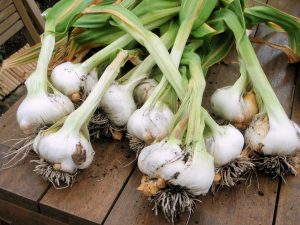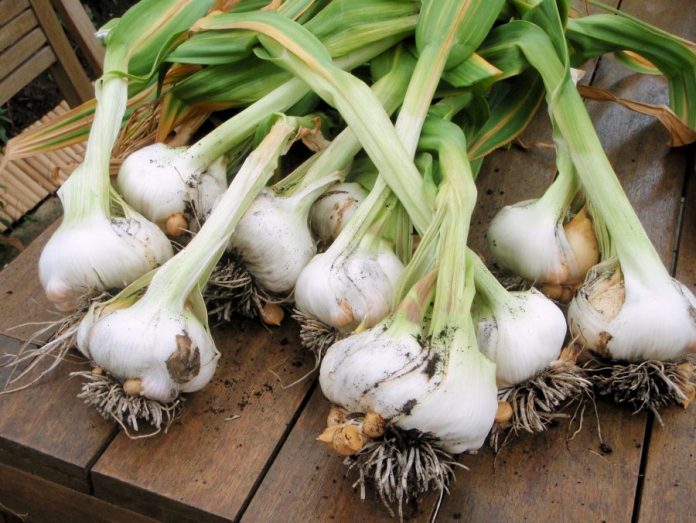 Bring up the topic of French or Italian cuisine and someone in the room will swoon while they describe some scrumptious dish or other. Have you ever asked yourself why the mere mention of such cooking has this effect? The answer involves one word: garlic; known in Latin as allium sativum.
Bring up the topic of French or Italian cuisine and someone in the room will swoon while they describe some scrumptious dish or other. Have you ever asked yourself why the mere mention of such cooking has this effect? The answer involves one word: garlic; known in Latin as allium sativum.
Like gunpowder, garlic originated in Asia, but found its way to France and Italy, where it grows wild to this day. Alas, such is not the case in Texas; but, that’s no reason to do without this fresh-from-the-garden seasoning delight.
In North Texas, August-November is the time to sow garlic in the garden. So, the next time you’re in the grocery store pick up a couple of nice-looking bulbs in the produce department and bring them home.
Peel off the thin, papery skin to uncover the garlic “cloves” that make up the bulb. The average garlic bulb has about 20 cloves, more than enough for a row in the garden or a sunny spot in the back yard. Break the clove apart and in the immortal words of some famous French chef: “voilà,” you’re ready to plant. What could be easier?
Till the soil, add plenty of compost, water things down then insert each clove about two-inches deep, pointed end toward the sky, and place them about six-inches apart.
Push a couple of inches of soil over the planted cloves, give them another good drink, then sit back for about six-months.
Garlic has a long growing season from sowing to what the professionals call “market maturity,” but, oh boy, is the finished product worth the wait!
Won’t garlic freeze during the winter? The answer is an emphatic “yes” the tops will, but as soon as the sun comes out, the green leaves defrost and go right on with the business of feeding the bulb via photosynthesis.
Another nice thing about garlic is its drought-resistance. If you forget to water it for a-while, no problem, it doesn’t mind dry feet, but don’t overdo the neglect. When the ground feels dry, give it a drink.
All this doesn’t mean your row of garlic will be ready to harvest in January.
Garlic grows slowly during the winter months, then picks up a serious head-of-steam as soon as the ground warms by early April. By June, the green leaves begin to wither. Be patient, when all the leaves turn brown, the bulb is ready to harvest.
Grab the leaf stalk near the dirt, then wiggle the bulb loose and shake off the dirt. Trim the roots with a pair of scissors. When you have half-a-dozen bulbs, braid the leaf stalks together, then tie the bundle with a string and hang it in a dark closet until you’re ready to use. Don’t wash off the dirt-film for longer storage life. They should be usable for about a year.
Truly fresh garlic cloves exude transparent juice when crushed for cooking. The clove “meat” also becomes transparent when crushed. The French refer to the aroma as the garlic’s “bouquet.”
Here’s the recipe for French all-purpose vinaigrette salad and vegetable dressing:
- ¼ cup red wine vinegar
- ¼ cup extra virgin olive oil
- ¼ cup regular vegetable oil
- 1-2 medium garlic cloves crushed
- ½ teaspoon of salt
- 1/8 teaspoon of black pepper
The dressing stores in the refrigerator for about a week.
Contact the writer at [email protected]













 GIF.gif)




